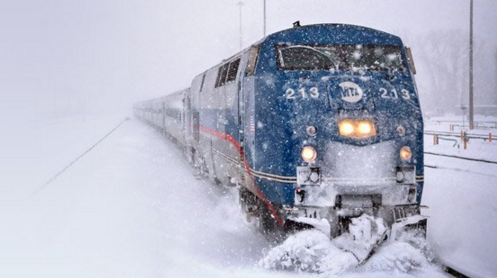With the arrival of winter, now is the time to be sure you’re ready to stay mobile, whatever Mother Nature may throw at us. Here are a few tips:
For Your Car
Get your car’s battery checked. If it is weak or the terminals are corroded, you won’t be able to start your car, especially in cold conditions. New batteries are worth the investment, if only for the peace of mind.
Check your tires. Colder weather means the pressure in your tires will go down, so check your car’s manual and re-inflate if necessary.
Got antifreeze? It should be replaced every two years, using a 50-50 mixture with water.
Oil change: As with your tires, lower temperatures will affect your engine’s “blood,” thickening it as it gets colder. Your mechanic or oil-change shop will know what’s right for your car. And forget that old myth of oil changes every 3,000 miles: 5,000 to 7,500 miles between changes is now OK according to experts.
Windshield wipers should be replaced annually, an easy do-it-yourself project at any auto store. Don’t forget to fill the wiper-fluid reservoir with something freeze-resistant.
Be a Boy Scout and check your trunk for an inflated spare tire and all the emergency gear you might need: flares, jumper cables, first-aid kit, thermal blanket, etc.
For the Train
Except in the worst blizzard conditions, the train will usually keep running, though sometimes at a reduced frequency. Though dependable, riding Metro-North and Amtrak in the winter is not without its challenges
Never assume it’s “business as usual” and trains will be running on time in bad weather. Listen to the radio and consult apps like the MTA’s “TrainTime” and my favorite, “Clever Commute,” for updates on service.
Give yourself extra time to get to the station and watch those icy platforms.
Dress for the bad weather. If your station’s waiting room isn’t open, call Town Hall or the Police Department.
In sub-zero weather that’s not just an inconvenience, it could be a safety hazard.
If you find a railcar lacking heat, ask the conductor to write it up. Or use the www.MTA.info website to file a report yourself.
Most of all, give yourself extra travel time. Don’t stress about delays. At least you’re not driving on an icy parkway.
If You’re Flying
When booking your flight, consider your options. If you can’t find a nonstop, avoid connections in weather-plagued hubs like Chicago or Denver. Charlotte or Dallas have less chance of being snowed in.
Watch the weather and anticipate delays. If the airlines know a storm is coming they often waive re-booking fees if you want to fly before the weather hits or have to delay until after the airport reopens and schedules get back to normal.
If the highways are a mess, try taking the train to the airport. LaGuardia and Newark are accessible by Metro-North and Amtrak, but Kennedy airport is a challenge.
Whatever your mode of travel, a little prep time now will help you get through winter unscathed.
_______________
Jim Cameron has been a Darien resident for 25 years. He is the founder of the Commuter Action Group and also serves on the Darien RTM. The opinions expressed in this column are only his own. You can reach him at CommuterActionGroup@gmail.com
Republished with permission of Hearst CT Media.


